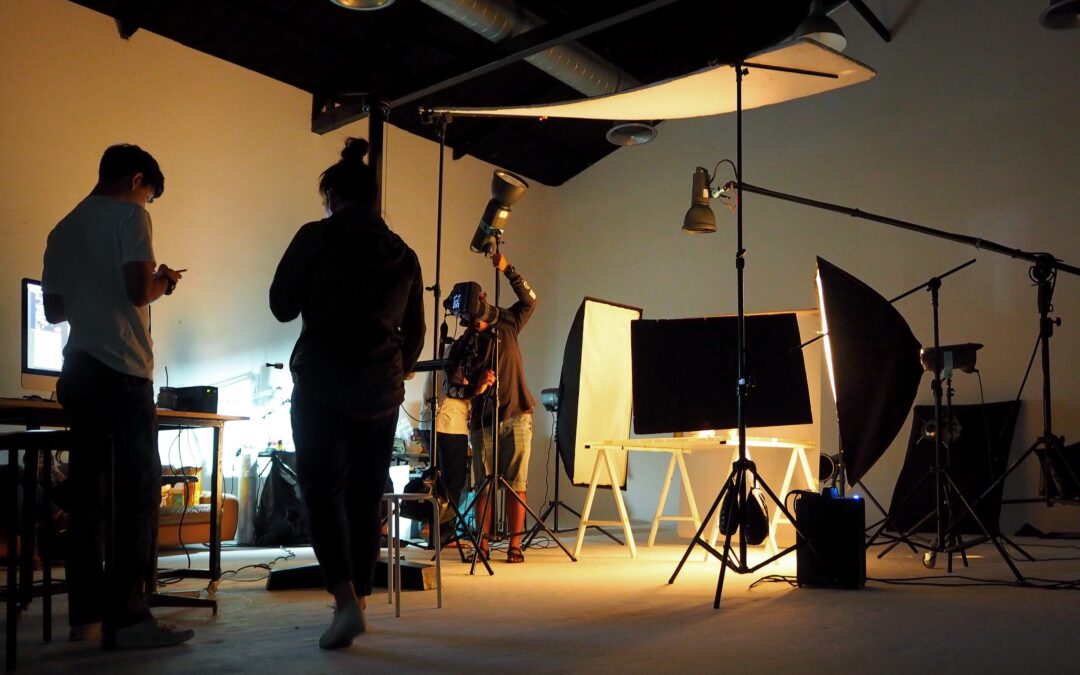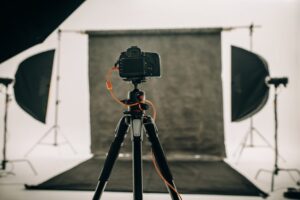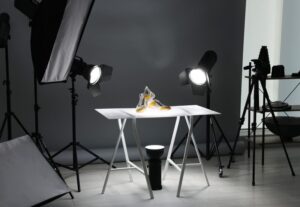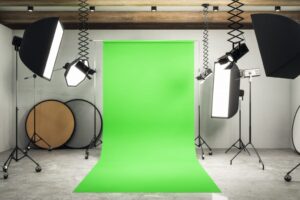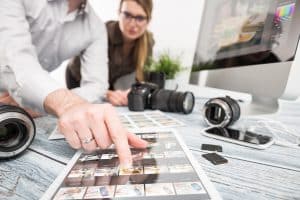How do you ensure the photos you take of your business’s products or services are high-quality images? It takes more than an expensive camera. In this article, we cover the equipment, materials, content and planning that goes into a photoshoot, so you can consistently get the photos you’re looking for.
Finding The Right Cameras For Photoshoots
Cameras come with many different strengths and specifications. If you’re not careful, you could easily spend thousands of dollars on the wrong product and end up with a tool you can’t use properly. If you need some suggestions on which camera is right for you, check out this list from Tech Radar. I personally recommend using the Canon EOS Rebel T7i. I use this camera for photoshoots and taking videos, and it has served me incredibly well. If your photoshoots involve different lightings and setups, this is a versatile option.
That being said, many modern smartphones are perfectly acceptable as an alternative. Most have high-quality cameras and are more than capable of taking the photos you need, especially for those that are unfamiliar with more sophisticated equipment or are on a budget and do not want to purchase something new.
Regardless of whether you choose a DSLR camera or the camera on your phone, you need a tripod. Tripods allow you to set up clear shots. It might be tempting to just lean your camera against something sturdy, but that creates opportunities for your camera or phone to slip or be damaged. Instead, invest in a small, relatively cheap tripod.
Lighting Options for A Photoshoot
Natural Light Cons
To me, lighting is the most important aspect of any shoot. You can either decide to use natural light or artificial light. While it may seem more appealing to shoot in natural light, you are also leaving yourself vulnerable to the elements. Photography Life agrees. In their words,
“Natural light can vary drastically over the course of a few hours. The classic example is between mid-afternoon light, golden hour, sunset and blue hour. All of them can lend drastically different looks to your subject. Some lighting conditions are even more fleeting.”
Natural Light Pros
Natural light makes the products look, as the name suggests, more natural, but getting the right shot will depend more on luck than skill. However, there are other benefits to using natural lighting. When you use natural lighting, you have a lot less equipment to lug around. This makes tearing down and packing up easier. If you decide to shoot using natural light it will also cost you a lot less, since you won’t have to invest in a lighting kit.
Artificial Light Cons
As someone who has had several photoshoots ruined by poor weather, I prefer using artificial light. However, that’s not to say it’s a perfect solution.
There’s a lot of gear associated with artificial lighting. I recommend using a lighting kit that has three sources of lighting, so you can easily manipulate shadows and where the light comes from. This will include a bevy of instruments you will need to use.
Artificial Light Pros
Artificial light gives you complete control over how your shoot looks. While using natural light is cheaper, there is almost no control. Using artificial lighting will get you the most bang for your buck.
Photoshoot Location
In addition to equipment and lighting, figuring out where you are going to be shooting is equally important. Will it be in a studio where everything is under your control, the outdoors or at another location? This will largely decide how your shoot goes. If you are in a studio, you’ll need to plan accordingly and maximize your time. Unless you have your own space for a studio, you will probably need to rent a space. If you don’t plan well, you may end up needing more time, which will significantly increase your budget.
If you are shooting outside, check the weather in advance of the photoshoot. As stated before, weather can ruin a shoot on short notice. Bring plenty of supplies and consider if you will have access to power if you need it. Shooting outside will give your pictures a lovely natural feeling to them, but there may be some variables you can’t plan for.
If you plan to shoot on location, make sure you and your team have open communication with the business you are doing the shoot for. Many times, you will be doing a photoshoot for a business when they are in normal operating hours which means there will be customers and workers around. When you get to the location, find a spot in the back room, or in a corner, where you can place all your equipment and start setting up for the shoot. If you plan on getting action shots of customers or the staff working, make sure you get their permission first.
Using A Background For Photoshoots
If you are doing a product photoshoot, where you will be photographing objects instead of services, you may want to invest in different backgrounds. You can use pretty much any color you want, but I would suggest either black, white or a green screen background. Black and white backgrounds will focus attention on the product, while a green screen allows you to change the background when editing the photos after the shoot.
Another important thing to know about backgrounds is how to make use of a “sweep.” According to Canva, “This is a curved screen or cardboard behind the product that removes distractions and makes the product appear to be floating.” Having a smooth background also makes it easier to edit the photo after the fact.
Reflector Card
A reflector card is simply a white card that helps bounce light around your photoshoot. Shopify offers this helpful tip regarding reflector cards during photoshoots: “This shadow side will typically be too dark, so we use something white to reflect the light back into the shadows and brighten it up.”
Take More Photos Than You Think You Need
If you think you need 100 photos, take 200. You never know how one photo is going to turn out. Taking plenty of photos allows you to choose from the best when you are done. The reasons people might use a product are as varied as the customers themselves, so make sure you show different angles and poses for your product images.
If you’re shooting clothing, for instance, take a photo of the garment alone. Your next photo could be of the clothing on a mannequin whose color contrasts the color of the product. For additional photos have someone model the photo, allowing you to take pictures of the product from the person’s different poses and angles.
Regardless of the products you’re photographing, having more images now will make your work easier later down the line.
Touch Up After The Photoshoot
Your job is not done when you finish the photoshoot. When you are back in your workspace, upload your photos and back them up. After you’re done uploading and saving a backup, it’s time to go through all the images and select the best ones. Use a critical eye and look for things like shadows, people in the background, blemishes on products and other issues with each image. Once you select all the photos you want to use, touch them up using Adobe Photoshop, or another photo editing software. If you do not have experience using these types of tools, you could consider outsourcing. If you would like some additional tips on editing, check out our blog post on video editing. Many of the tips apply to photoshoots.
Posting Images On Social Media
Once you are done touching up your photos, you are ready to post them on websites and social media pages! Just make sure you grab the correct dimensions for each social media platform so the image looks the best it possibly can.
Contact Us!
Conducting photoshoots can be a rewarding experience. They can be great for your business and can put your brand on the map in a unique way. If you want to set up a photoshoot with us or have questions about marketing or social media, contact us at Three Girls Media for a complimentary consultation. We have a full staff of seasoned marketing professionals who are eager to help you reach your business goals.
Special Offer:
Sign up for a complimentary consultation during January and receive an Email Marketing Guide valued at $475! We offer a 30-minute phone consultation with our CEO and can answer your questions and discuss your specific marketing needs – no strings attached. Call 360-955-1410 or contact us today to arrange your consultation!

